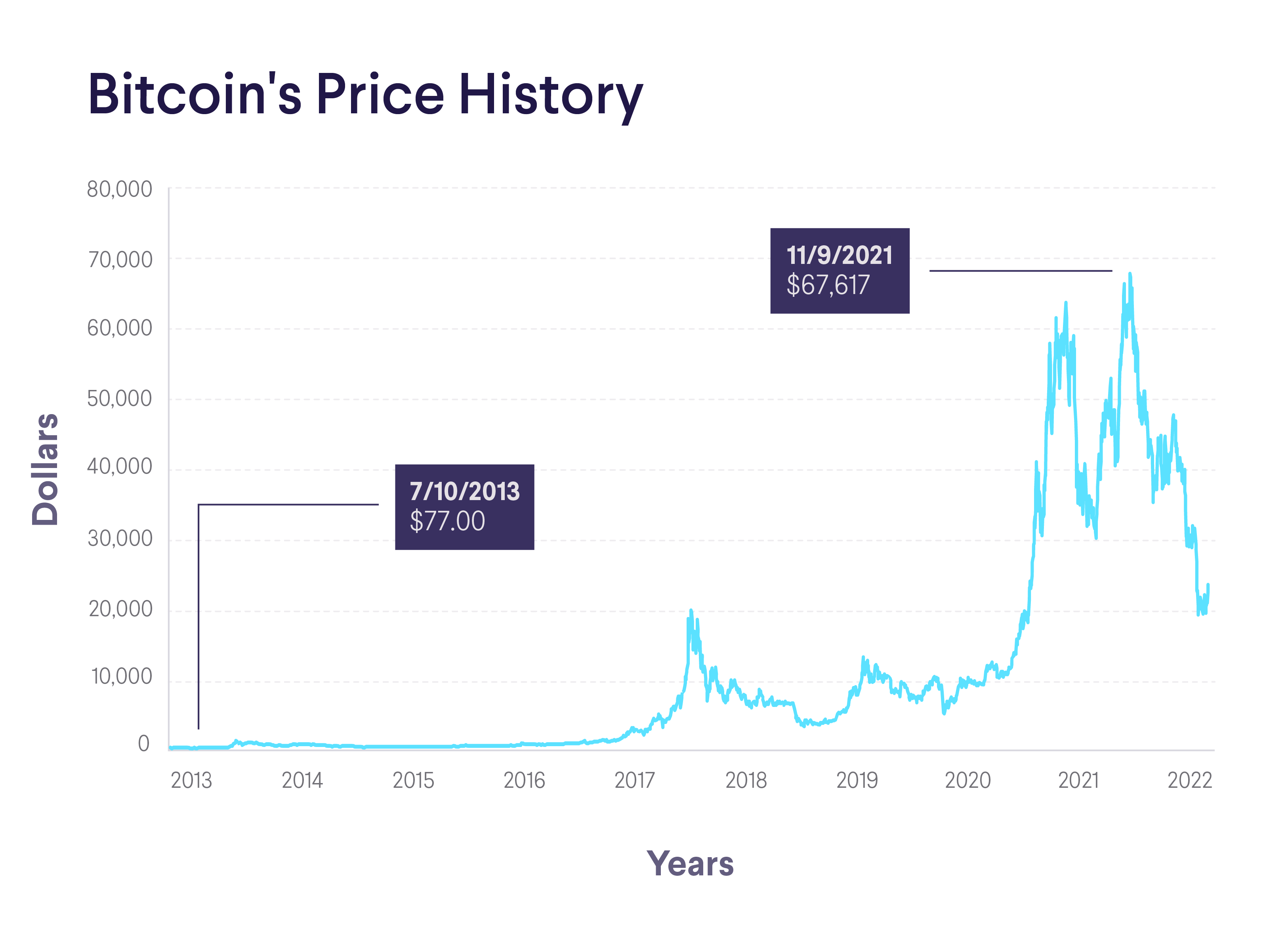
Bitcoin has come a long way since its initiation in 2009, making it through several drastic ups and downs in global markets. As confusion surrounding the currency and the technology behind it has gone away, more and more people have grown interested in Bitcoin. A survey conducted in 2014 noted that about 50% of people learning about Bitcoin for the first time found it intellectually interesting, and about 66% of these people were very likely to purchase bitcoins. The survey came right on the heels of BTC’s price taking a huge leap from $13 to $1000 in 2013, and managed to capture a realistic picture of the learning curve on Bitcoin.
Bitcoin brought the blockchain technology to the limelight, got people interested in crypto trading, and promoted financial freedom through decentralized finance. The contributions of BTC in global finance would make up a never ending list. Let’s take a quick look at BTC’s journey so far, and what lies ahead.
The Initial Response
In 2011, Bitcoin got to $1 for the first time, but the price growth of the coin slowed down after that, possibly due to altcoins like Litecoin emerging. This was until 2012, when BTC had its first halving, and liquidity for the coin went on increasing. 2013 was, of course, a decisive year for BTC, with its price touching the highs of around $1,100; the crypto saw gains of 6,600% in the year. Moreover, the bull run pushed Bitcoin’s market cap to $1 billion for the first time, and the global response to Bitcoin grew enthusiastic enough for the first ever Bitcoin ATM to be installed in Vancouver.
Fast forward to the second halving of BTC in 2016, after which BTC price rose to about $20,000 in December of 2017. This was the time when the general populace around the world became well aware of the concept of Bitcoin, and crypto trading and decentralized finance in turn. Crypto news spread to mainstream media outlets, and retail investors started getting into the market in major numbers, which reflected in the prices of this currency.
The third halving of Bitcoin in 2020 initiated another big bull run, which led to the price of BTC touching an all-time high of about $69,000 in November 2021. While this bull run petered out into a strict bearish market for crypto trading throughout 2022, Bitcoin continues to grow in terms of mainstream adoption. The growth curve of BTC over the years definitely suggests how mass opinion regarding crypto trading and blockchain technology has changed over the years- people went from thinking it was just another well-planned financial scam to considering Bitcoin as an asset class comparable to gold as a store value.
Case in point, as the blockchain data platform Chainalysis reported, the global adoption of BTC and in turn crypto trading went up by an astounding 881% between July 2020 and June 2021.
Since 2009 up to 2014, upon learning about the way Bitcoin supports peer-to-peer transactions without a middle man and provides complete financial freedom along with security, 83% of the skeptics changed their minds to having a positive outlook on Bitcoin and decentralized finance. The world has definitely come pretty far since then, especially considering how Bitcoin is already accepted as legal tender in countries like El Salvador and the CAR (Central African Republic).
Bitcoin In The Near Future
Judging by how rapidly the learning curve related to Bitcoin has evolved, most investors harbor long-term faith in the potential of the currency at the advent of 2023. As Blockware Intelligence suggested in a report in 2022, the global adoption of this crypto (and in turn the blockchain technology and decentralized finance) can actually occur far more quickly than the adoption of past disruptive technologies, with the global take-up on its way to hit 10% by 2030. The report derived this conclusion from the usage of the average and weighted average of historical technology adoption curves, along with the growth rate of the adoption of Bitcoin.
As regulators around the world come up with their respective measures to legalize and regulate crypto trading in their countries, Bitcoin has gradually become an alternate name for financial freedom. In the upcoming times, it’s expected that Bitcoin will continue to rule the crypto markets, not only recovering the value lost to the 2022 bear run, but going above and beyond.

